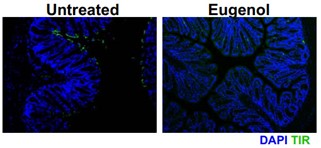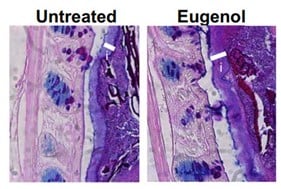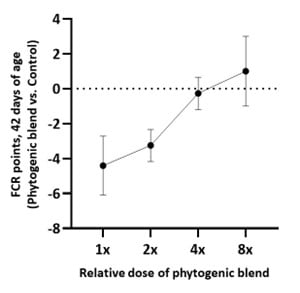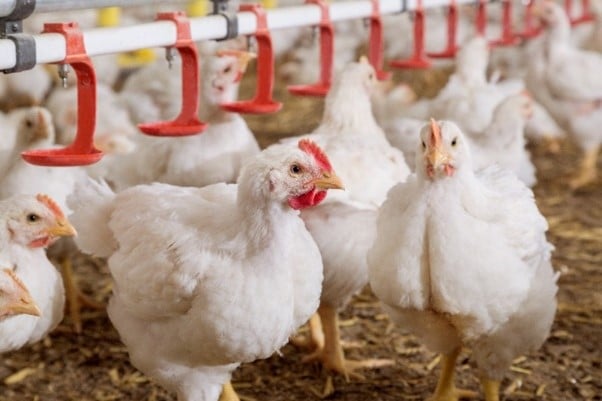How phytogenics really work – a new lens for animal nutrition
- Innovation
By Ellen Hambrecht, Global Product Manager Phytogenics, Trouw Nutrition Global and Melchior de Bruin, Development & Deployment Manager, Trouw Nutrition Global
Phytogenics were introduced to animal nutrition decades ago with a specific objective: to find alternatives for the use of antibiotics as growth promotors. Considering that narrow focus, phytogenics – specifically essential oils – were screened for antimicrobial properties and selected for their ability to kill relevant pathogenic bacteria. However, even though some phytogenics may have antimicrobial activity in vitro, at the in-feed inclusion levels commonly used, they have little to no antimicrobial effect. So, it is time to reconsider the mode of action for phytogenics in the animal and truly harness the full power of this fascinating category of molecules.
Generally, phytogenic means ‘derived from plants’ and, in the present context more specifically, bioactive components from plants that function as defence mechanisms or signalling compounds. As feed additives, phytogenic compounds have the potential to modulate signal transduction pathways relevant for physiological processes such as nutrient absorption or immune response, to name just two examples. When used at the right dosage, phytogenics are a powerful tool in supporting the animal to come closer to its genetic potential.
The gut – so much more than a digestive organ
One of the focus areas in broiler production is the intestinal tract because it is one of the most prominent sites of interaction of the animal with its environment. Moreover, it is the site where dietary energy and nutrients need to be optimally digested, absorbed and converted into molecules required for maintenance and growth. So, when focusing on improving production efficiency of broilers, the gut is the place to be.
Traditionally, animal nutritionists have focused on formulating diets that meet the animal’s nutritional requirements at minimum cost; on exploring ways to remove or mitigate the effects of anti-nutritional factors in feed raw materials; and on manipulating the gut ecosystem by using antibiotics, pre- and probiotics and other compounds. Only in recent decades have researchers realised that the gut serves as so much more than a digestive organ.
Furness et al. (2013) describe the gut as a sensory organ, which detects and processes ‘messages’ from its environment through a myriad of receptors located on intestinal cells facing the gut lumen. Targeting these receptors through molecules supplied in the animal’s diet can trigger systemic physiological responses that in turn affect metabolism, immunity, hormonal secretion, inflammation, etc. and, ultimately, animal performance.
Rethinking the role of phytogenics – considering mode of action
Co-evolved during the ever-ongoing ‘animal plant warfare’, plant bio actives (i.e. phytogenics) have the potential to act upon said receptors along the animals’ gastrointestinal tract. These receptors are conserved across species, which is why mechanistic effects will be similar independent of species though their relevance and impact on productive outcome may shift.
Wlodarska et al. (2015) studied the ability of six different phytogenic compounds on mice’ resistance to enteric pathogen infection. Figure 1 shows that mice receiving eugenol (the main component of clove essential oil) had reduced colonization of Citrobacter rodentium, an enteric pathogen. Astonishingly, however, growth of C. rodentium appeared to be quite unaffected by eugenol as such! Instead, eugenol was shown to strengthen the mucosal barrier that protects against invading pathogens and disease, rather than affecting the pathogen directly.
A

B

C

Figure 1. (A) Green immunostaining indicating colonization with C. rodentium in untreated mice but not in mice receiving eugenol; (B) almost identical growth of C. rodentium with or without eugenol; and (C) thickening of inner mucus layer in mice receiving eugenol. Images adapted from Wlodarska et al. (2015), used under https://creativecommons.org/licenses/by/4.0/.
Another example of systemic effects that go far beyond direct interaction between phytogenic compounds and the gut microbiota are presented in a study by Mousavi et al. (2020). Mice supplemented with carvacrol (the main component of oregano essential oil) and challenged with Campylobacter jejuni showed a lower pro-inflammatory immune response not only in the intestinal tract but also on a systemic level and in other organs such as liver, kidneys and lungs compared to non-supplemented mice.
Inflammation comes at a cost
These two examples prove that phytogenics can trigger systemic physiological responses. What’s more, the anti-inflammatory properties of carvacrol demonstrate the link to livestock performance because low-level, chronic inflammation of the gut is a well-known condition in modern broiler production. Inflammatory processes have a negative impact on productivity by impairing nutrient absorption and diverting nutrients away from growth towards support of the immune system.
A wide range of environmental factors such as poor-quality feed, feed changes, high stocking densities, reused litter, (mild) disease challenges and the intestinal microflora itself can trigger or contribute to this chronic inflammation in broilers. Figure 2 shows inflammation in the duodenum of an otherwise healthy broiler that was triggered by feed withdrawal for a mere four hours. By acting on receptors that ameliorate such an inflammatory response, phytogenics can help optimize nutrient availability for growth thereby improving broiler performance.

Figure 2. Inflammation of duodenum of a broiler at 42 days of age after only four hours of fasting.
Interestingly, one of the most accepted theories for the mode of action of sub-therapeutic levels of antibiotics (i.e., antibiotic growth promotors) is their role in reducing low-level inflammation and immunologic stress rather than their direct antibiotic influence on the microflora (Niewold, 2007).
The dose makes all the difference
It is important to realise that many phytogenics show a biphasic dose-response, meaning that their effects can be the complete opposite depending on dose (Jodynis-Liebert and Kujawska, 2020). For example, low doses of a specific phytogenic compound can act as an anti-inflammatory, but the same phytogenic can trigger an inflammatory response at higher levels. The authors’ own research with a phytogenic blend showed that FCR improvement was highest at the lowest dose whereas, on the contrary, at higher doses the effect diminished or disappeared altogether (Figure 3). Consequently, it is not only important to conduct dose-finding studies to identify the optimum supplementation level of phytogenics but equally crucial that every batch be subjected to rigorous quality control and standardization to ensure consistent active content and efficacy.

Figure 3. Effects of a phytogenic blend on feed conversion ratio in broilers relative to an non-supplemented control (Selko, unpublished data).
With a new lens harnessing the full potential of phytogenics
These examples clearly demonstrate that phytogenics offer opportunities to improve farm economics. Figure 2 shows that adding a phytogenic blend to broiler diets led to an improvement in FCR of more than 4 percentage points compared to a non-supplemented control group. Together with the large scientific body of evidence on individual phytogenic compounds, such research supports the notion that many classical challenges in livestock production can be addressed by phytogenics. It should be acknowledged, however, that phytogenics are not therapeutics. The lens for phytogenics should be broadened beyond their in vitro antimicrobial effects and their use as agents in a narrow, oversimplified silver-bullet approach.
Why production efficiency is so important
A growing world population and more people entering the middle class are fuelling the demand for animal protein (especially poultry), and highlighting the need for efficient production practices. Geopolitical events contributing to inflation, raw material volatility and high energy prices additionally necessitate poultry producers to focus on production efficiency.

The boundaries of animals’ genetic potential have expanded in recent decades, contributing to greatly improved animal performance indicators such as average daily gain and feed conversion ratio (FCR). But despite such advances, the performance of most livestock animals today is still about 40% below their genetic potential.
Genetics and environment are interdependent. Animal performance observed on the farm is the result of the interaction of the animal with its environment. Environmental factors that come into play include housing, nutrition, climate, disease challenges, farm management and others. Today’s performance levels suggest that the environment often is suboptimal and provide a powerful incentive to help close the gap between an animal’s performance and its genetic potential.
Recognizing phytogenics’ contribution to the host’s natural defence mechanisms as well as robust physiological functions in all kinds of environmental conditions will help harness the true potential of phytogenics in supporting efficient and profitable livestock production.
For further information, kindly write to us at customercareindia@trouwnutrition.com or visit our website: www.trouwnutrition.in